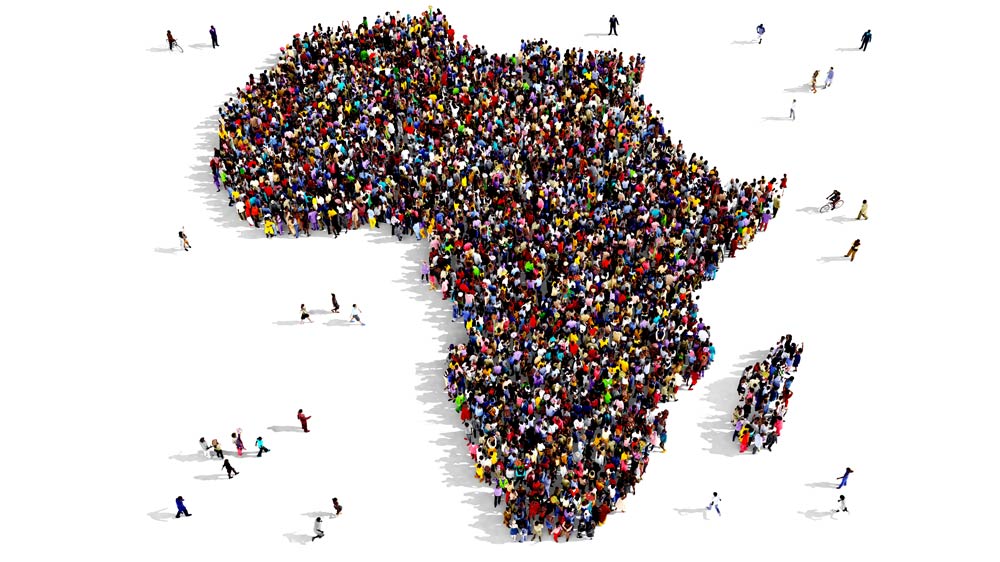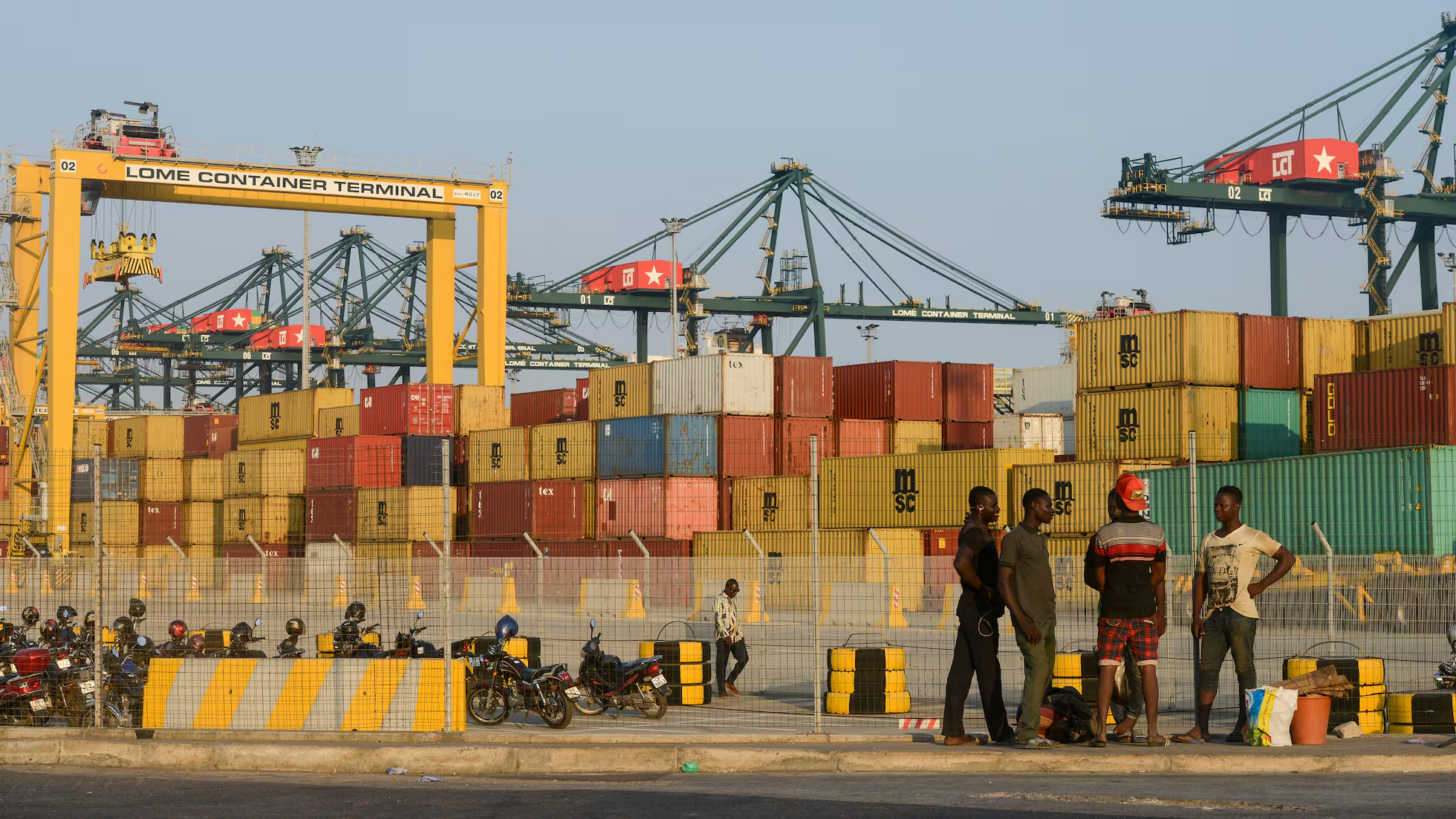
Business Opportunities in Africa: The Most Promising Sectors in 2026
In this article, we will explore the most promising business opportunities in Africa, analyzing key sectors and countries with the highest potential. We will examine how African international trade is evolving and the factors driving Sub-Saharan Africa toward a new development model. We will also address persistent challenges, such as extreme poverty affecting 462 million people, and strategies to overcome these obstacles while leveraging the continent's immense potential.
Africa's Economy is Undergoing a Remarkable Transformation, Positioning Itself as the Second Fastest-Growing Region on the Planet After Asia.
Since 2001, the African continent has maintained an average growth rate above 5%, though it recently slowed to 3.6% in 2022 and 2.5% in 2023. However, projections are optimistic: Africa's economy is expected to recover, reaching 3.5% in 2025 and accelerating to 4.3% in 2026-27.
Despite current challenges, Africa's economy and population represent a market with enormous potential. The continent is home to over 1.1 billion people (approximately 15% of the global population), with projected annual consumption of $4 trillion, which could rise to $5.5 trillion by 2025.
Africa Today: Economy, Population, and Transformation
The African socioeconomic landscape is undergoing profound transformations that are redefining its role on the global stage. To understand this phenomenon, it is essential to analyze the key aspects that characterize the continent today.

Key Data on Africa's Economy
Africa's economic performance in recent decades has been remarkable. Between 2000 and 2010, the continent's economy grew at an annual rate of 4.8%, significantly outpacing the global average of 3.1%. Although growth slowed to 3.1% between 2011 and 2020, this figure remained above the global average of 2.4%.
However, this economy faces significant structural challenges. More than half of African countries rely on oil, gas, or minerals for at least 60% of their export revenues, making them vulnerable to international market volatility. Additionally, over 50% of Africa's foreign trade is concentrated in just five non-African economies.
A crucial aspect is the role of small and medium-sized enterprises (SMEs), which generate 80% of employment on the continent. Yet, in 2023, 32% of these businesses identified lack of access to financing as a critical obstacle to their growth.
Population Growth and Youth
Africa is undeniably the youngest continent in the world, with 70% of the Sub-Saharan population under 30. Currently, it has approximately 1.5 billion inhabitants, a number that could reach 5 billion by 2050—when one in four people on the planet will be African.
This demographic explosion will have profound global consequences. By 2030, 42% of the world's youth will be African, and by 2070, one in three people globally will be of African origin. The magnitude of this shift becomes clearer when considering that in 1950, Africans represented just 9% of the world's population.
Urbanization and Structural Change
The continent is experiencing the fastest urbanization process in the world, with projections indicating it will become majority-urban by 2035. Africa's urban population will grow from 471 million in 2015 to roughly 1.34 billion by 2050.
This phenomenon is not limited to major metropolises; much of the growth is occurring in small and medium-sized cities. The transition is evident: in 2015, 22 African countries had already surpassed 50% urbanization, and the continent's overall rate increased from 31% in 1990 to 50% in 2015.
Urbanization presents both opportunities and challenges. Among the latter is precarity: approximately 43% of urban dwellers live below the poverty line, a situation requiring urgent and strategic solutions.
1. International Trade and Economic Zones
African international trade is at a historic inflection point, currently accounting for just 3% of global exports and imports. In 2019, African countries' merchandise exports and imports totaled $462 billion and $569 billion, respectively.
African Continental Free Trade Area (AfCFTA)
Established in March 2018, the AfCFTA is the world's largest economic integration zone in terms of participating countries since the formation of the World Trade Organization. This ambitious project was initially signed by 44 African heads of state, creating a single continental market for goods and services with free movement of capital and business travelers.
The agreement requires signatories to eliminate tariffs on 90% of goods, granting free access to products and services across the continent. According to estimates by the UN Economic Commission for Africa, intra-African trade could increase by over 50%—or even double—within roughly a decade of implementation.
Regional Integration and Cross-Border Cooperation
Despite having over 200 regional groupings, intra-African trade remains low, accounting for just 23% of total exports and 13% of imports in 2020. Some organizations, such as ECOWAS and SADC, have shown some unifying dynamism, reviving the Pan-African ideal.
However, the continent faces significant structural obstacles to integration, including insufficient transport and communication infrastructure, weak production diversity, and small domestic markets. The average cost of importing a container in Africa is $2,492, compared to $935 in East Asia and $1,488 in Latin America.
Key Exports and Imports
Africa's main trade partner is the European Union, which in 2020 accounted for 28% of both exports and imports. China ranks second as a supplier, with 16% of total imports.
African exports are dominated by natural resources: oil (Nigeria, Angola, Algeria), minerals (gold from Tanzania, Ghana, and Mali; diamonds from South Africa, Namibia, and Angola), and agricultural products like coffee (Ethiopia, Uganda), cocoa (Côte d'Ivoire, Ghana), and tea (Kenya, Malawi).
African industries' participation in global value chains is primarily characterized by the export of raw primary inputs. The low volume of intra-African trade in intermediate goods (estimated at 12.8% in 2022) reflects the lack of integration of African economies into regional supply chains.
2. Sectors with the Highest Investment Potential
Four sectors stand out on Africa's investment map due to their dynamism and long-term growth potential.
Energy and Natural Resources
The African continent possesses extraordinary renewable energy resources, with 60% of the world's solar potential. Yet, energy investment accounts for just 3% of the global total, while over 600 million people lack access to electricity. This contrast reveals a massive opportunity: in Mauritania, for example, a green hydrogen project is expected to generate roughly $34 billion in investments.
To harness these resources, countries like Rwanda have implemented special tariffs for renewables, increasing electricity access from 6% in 2009 to 75% in 2024. These initiatives are also attracting private capital through government guarantees and long-term power purchase agreements.
Agribusiness and Food
Global food production must increase by 50% by 2050 to feed the world's population. Africa, with a quarter of the planet's arable land, could be key to achieving this goal—though it currently generates just 10% of global agricultural output.
Small farms produce up to 70% of Africa's food. Meanwhile, the African agribusiness sector is projected to reach $1 trillion by 2030, creating millions of jobs and connecting small farmers to larger markets.
Technology and Digital Services
Africa's digital trade is growing rapidly. In 2022, African exports of digitally delivered services grew by 8% (double the global rate), reaching nearly $33 billion. These exports are projected to increase by $74 billion between 2023 and 2040.
Ghana leads this sector with $6.2 billion in digital exports (19% of regional exports). E-commerce also fosters inclusion: three out of four African businesses trading exclusively online are women-owned.
Infrastructure and Transportation
Inadequate infrastructure significantly limits Africa's development. According to the African Development Bank, $130–170 billion in annual investment is needed to finance infrastructure projects across the continent.
The transportation sector, in particular, has been constrained over the past two decades. High relative transport costs undermine the competitiveness of African exports and raise prices for key imports. To overcome these obstacles, the African Union is promoting multimodal transport corridors, including nine major trans-African highways and a 9,059-kilometer rail network.
3. Leading Countries in Business Opportunities
When examining Africa's economic map, certain countries stand out as prime destinations for international investment. These markets combine political stability, strategic resources, and favorable regulatory frameworks, positioning them at the forefront of continental development.

Ghana, Nigeria, and South Africa
Ghana stands out for offering investors attractive tax incentives, security guarantees, and an optimal business environment. As a politically stable country, it excels in gold and bauxite deposits, with projected annual GDP growth of around 5.8%.
Nigeria, with its current 226 million people and projections to exceed 400 million by 2050, is poised to become the world's third-most populous country in a few decades. This giant represents Africa's largest economy, thanks to vast oil resources and an expanding consumer market, having boosted its GDP by 18% in 2022.
South Africa, the continent's second-largest economy after Nigeria, accounts for roughly 75% of African corporate presence. With a thriving services sector and 64% urban population, it offers a privileged gateway to the southern region.
Côte d'Ivoire, Kenya, and Senegal
Côte d'Ivoire serves as a strategic regional hub, with consistent annual growth between 9% and 10% over the past decade. For 2023, GDP growth was projected at 6.2%, making it one of West Africa's fastest-developing economies.
Kenya stands out for opportunities in digitalization, tourism, and sustainable infrastructure, maintaining positive growth even during global crises. Recently, it strengthened its international position by becoming a shareholder in the European Bank for Reconstruction and Development.
Senegal anticipates impressive GDP growth of 8.3%, ranking among the world's top ten fastest-growing economies according to the IMF, with an expected 8.8% increase. Its political and economic stability has driven numerous industrial projects backed by foreign investment incentives.
Factors Driving Their Appeal
Several common elements explain these countries' investment appeal:
- Favorable Demographics: A young and growing population ensures both labor supply and expanding consumer markets.
- Rapid Urban Growth: According to the OECD, Africa will have the world's highest urbanization rate by 2050, adding nearly 1 billion urban dwellers.
- Institutional Stability: Countries like Ghana and Senegal offer reliable regulatory frameworks that reduce investor risk.
- National Development Plans: Strategies such as Senegal’s Emerging Plan or Côte d'Ivoire’s 2021-2025 National Development Plan provide institutional support for priority sectors.
4. Structural and Social Challenges to Consider
Despite Africa's enormous potential, significant challenges persist that investors must carefully evaluate before establishing operations in the region.
Inequality and Persistent Poverty
Africa's socioeconomic reality presents stark contrasts. Currently, over 75% of the world’s poor live in Africa, with projections suggesting this could reach 90% by 2030. Approximately 422 million people survive on less than $1.90 per day, representing over 70% of the world’s poorest.
Recent economic growth has not been inclusive: while the richest 10% of East Africa’s population earns an average of 47% of gross national income, the poorest 50% receives just 13.3%.
Lack of Basic Infrastructure
Infrastructure gaps pose a fundamental obstacle. Securing a permanent electricity connection in Sub-Saharan Africa costs three times the global average and 52 times more than in high-income OECD countries. Additionally, 340 million people lack access to clean water, and 640 million live without electricity.
According to the World Bank, power shortages cause an annual loss of 2–4 percentage points in growth, directly affecting business competitiveness.
Dependence on External Aid
Many African countries remain overly reliant on international assistance. In nations like the Central African Republic, Somalia, and South Sudan, official development aid accounts for over 20% of gross national income. Even robust economies like Nigeria and South Africa heavily depend on USAID programs.
Rwanda exemplifies this dependence, with roughly 74% of its government budget coming from foreign aid. This weakens fiscal capacity in African democracies, potentially reducing government accountability to citizens.
5. Keys to Successful Investment in Africa
Investing in Africa requires a strategic approach combining long-term vision and adaptability. The potential is immense, but success depends on specific factors beyond mere capital injection.
Public-Private Partnerships (PPPs)
Collaborations between public and private sectors are crucial for boosting competitiveness in Africa. By establishing appropriate legal and economic frameworks, governments create foundations for a business-friendly environment. The Africa Agriculture and Trade Investment Fund (AATIF), launched in 2011, exemplifies how such partnerships can ensure food security and generate employment for farmers and workers.
PPPs also open creative pathways for development: the African Finance Corporation leads initiatives through innovative sovereign lending and off-balance-sheet structures, supporting water, social infrastructure, and transport projects in countries like Côte d'Ivoire and Tanzania.
Understanding the Local Environment
The real challenge lies in adapting business models after deeply understanding local realities. For goods, efficient distribution is key—without proper logistics, even high-quality products face high failure risks.
It is essential to grasp regulatory and cultural differences across countries. While corruption exists, it is entirely possible to run profitable businesses while avoiding it—notably, 14 African countries rank better than India on the Global Corruption Index. Investing time and physical presence builds trust; knowledge of local language and culture can make the difference between success and failure.
Sustainability and Social Responsibility
Sustainable investment in Africa requires balancing financial returns with positive social and environmental impact. Organizations like GSI demonstrate that investing in profitable businesses can simultaneously improve livelihoods for vulnerable populations. Their focus on agricultural value chains has enabled 3,343,370 small farmers to access services that increase land yields by an average of 52%.
Impact investing stands out for its intentionality, additionality, and focus on measurable outcomes. To implement it effectively, companies like AFC have developed specific policies on environmental and social risk, climate change strategies, and grievance redress mechanisms, aligning with international standards like the Sustainable Development Goals.
Conclusion
Business success in Africa fundamentally hinges on establishing strong public-private partnerships, deeply understanding local contexts, and adopting sustainable, socially responsible approaches. Companies that manage to balance profitability with positive impact will discover extraordinary opportunities.
The progressive implementation of the African Continental Free Trade Area promises to radically transform the commercial landscape, boosting intraregional trade and creating a unified market of historic proportions.
Africa's economic future, though complex, offers fascinating prospects. Its demographic transformation, abundance of natural resources, and growing technological adoption position the continent as an emerging epicenter of global innovation and growth in the coming decades.










